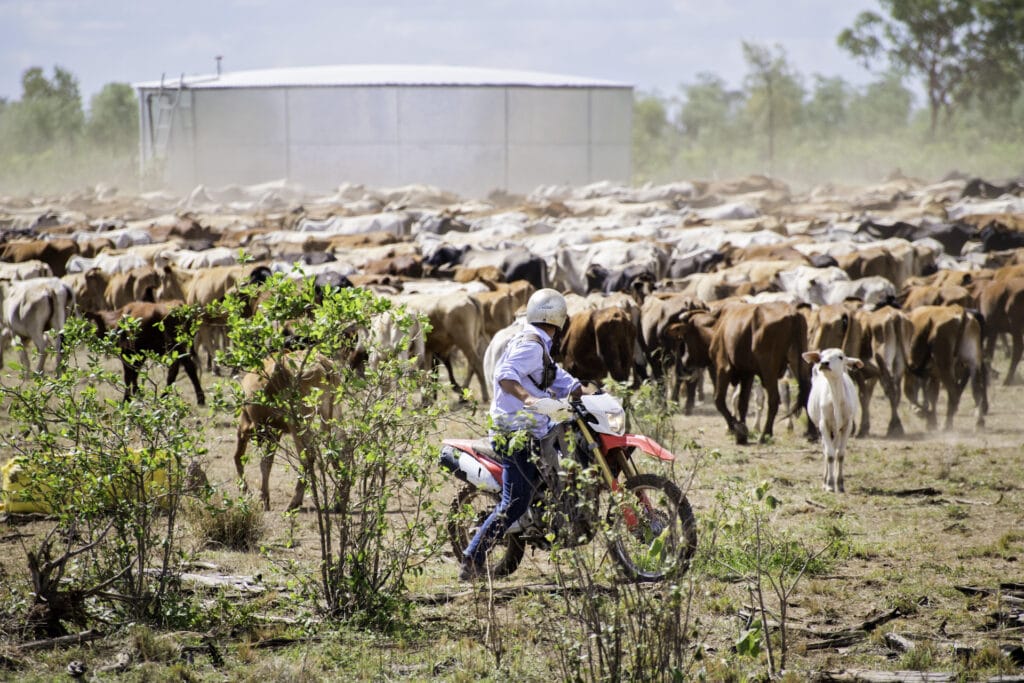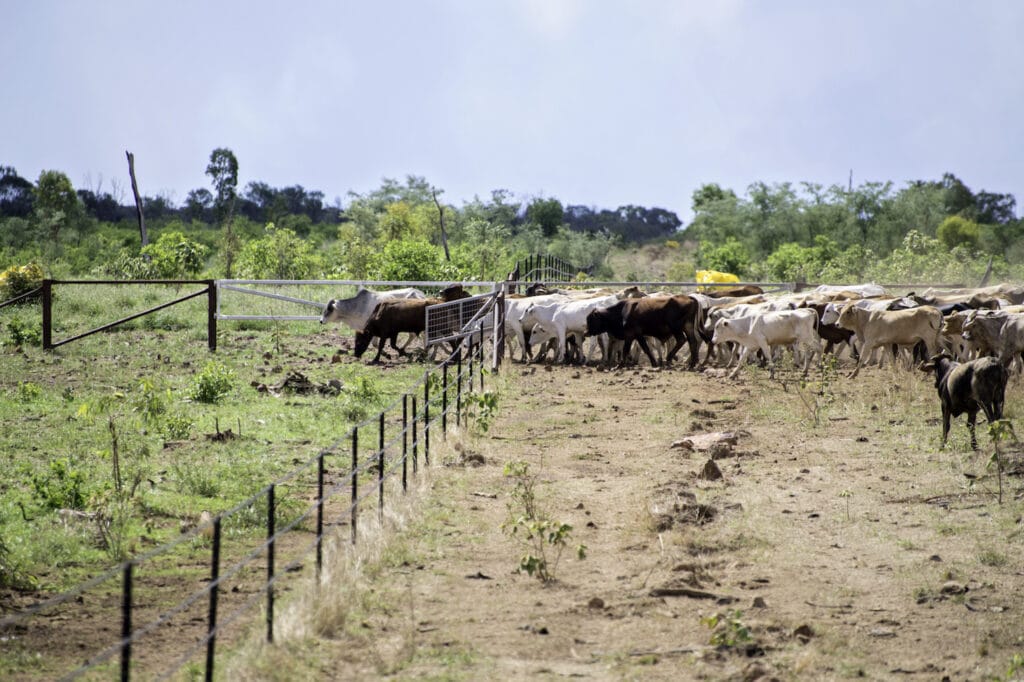Emma and Adrian Brown: Innovation in the Top End

Running tens of thousands of cattle across three stations and more than a million hectares will sound like a mammoth enterprise to most. But Emma Brown, who runs Amungee Mungee, Walhallow and Cresswell Downs with her husband, Adrian, deals with it as a straightforward equation.
“When it comes to beef production, it’s a very simple process,” she says. “On one side of the transaction, you’ve got the land asset, and on the other side of the transaction, you’ve got the cattle enterprise, which is the cash flow.
“It’s a matter of utilising the land that you’ve bought – and which we’re paying interest on. Water infrastructure across all the usable land is important for us because there’s no point having hundreds of thousands of acres of country you paid for but can’t use.”
To that end, the Browns, along with their business partner, have invested heavily in water infrastructure on their properties. They have laid hundreds of kilometres of pipelines, servicing enough watering points so cattle never walk more than two kilometres for a drink. At the same time, extensive fencing has given them more control over cattle movements.
It means less land degradation, better pasture utilisation and increased productivity. Within three years at Amungee Mungee, cattle numbers increased from 2,600 to over 40,000.

Building on decades of knowledge
The Browns’ management philosophy owes much to Emma’s father, the late John Dunnicliff. With experience running properties across the country, he recognised the potential to increase productivity in the Northern Territory.
The Dunnicliff family took over Beetaloo Station in the Barkly Tablelands in 2002. They found the country that was a mixture of land that was barely grazed, with areas near water that had overexploited soils and pastures.
John Dunnicliff embarked on a $40 million infrastructure build. He installed 600 135,000 litre tanks, laid 3,000 kilometres of poly pipe, and put up 3,000 kilometres of fencing. His aim was to regenerate degraded land, and make the most of underutilised country.
“I never stop appreciating that he had the gumption to take the plunge and do that monster development programme on Beetaloo,” Emma says. “And I never stop admiring the fact that it was so simple and it was so easy. Dad was amazing for having a very clear, simple vision, and he was very successful because of that. I guess I’m really grateful that he was big enough to dive in the deep end.”
Making the investment pay off
Having more paddocks and increased cattle numbers does present challenges –- namely, keeping track of hundreds of paddocks and the thousands of livestock that move through them.
That’s where AgriWebb farm management software has been a valuable resource for the Browns. They can record cattle movements the moment they happen, on a mobile or tablet – Emma does this from the back of her horse, as she walks cattle from the yards. These movements are synced across the AgriWebb platform, so everyone on the property knows exactly where livestock are. “I find it really useful for stock numbers, knowing what’s in what paddock, and how long it’s been there,” Emma says.
Emma believes such accurate, up-to-date figures will be increasingly important for attracting financial investment. “In the past, stock book numbers based on the old pocket book have always been enough, because that’s all banks have had to go off,” she says. “Now that technology is evolving it will encourage the banks to say, ‘we would like some evidence that the numbers are what you say they are.’”
AgriWebb also allows the Browns to review the feed available in the paddocks, thanks to a partnership with Cibo Labs. Cibo Labs calculates feed-on-offer based on remote imaging and machine learning. This valuable insight can be accessed through the AgriWebb platform. “I love the satellite imagery filtering in, so you can see what’s in the paddock.”
Planning for the years ahead
As well as improving their land, the Browns are improving their herd. “We have put a lot of time and effort into our genetics, focusing on high fertility at an early age because fertility is our biggest problem,” Emma explains. “We’re trying to get our calving percentage up as high as we can.”
While buying in the right bulls is key to this, Emma sees data-backed insights becoming increasingly valuable, as reviewing a cow’s fertility history will simplify culling decisions. “That’s when that information will be really valuable because we can dig into the history of the cow and say, well she’s only had a calf every second year, so she’s on the truck,” she says.
Considered land and livestock management is central to the Browns’ long-term goals. “Our plans for the future are pretty much to be sustainable economically and physically. We basically want to utilise the country that we own one hundred percent, and to make sure that it’s sustainable forever.”
To see how AgriWebb’s Livestock Management software can help increase efficiency and improve productivity on your operation, sign up for a free trial today.